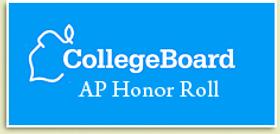Top Rankings
Beulah 27 School District ranks among the top 20% of public school district in North Dakota for:
Category
Attribute
Graduation Rate
Highest graduation rate (Top 5%)
Community Size
Largest student body (number of students) (Top 1%)
For the 2024-25 school year, there is 1 public preschool serving 319 students in Beulah 27 School District. This district's average pre testing ranking is 4/10, which is in the bottom 50% of public pre schools in North Dakota.
Public Preschool in Beulah 27 School District have an average math proficiency score of 42% (versus the North Dakota public pre school average of 42%), and reading proficiency score of 37% (versus the 44% statewide average).
Minority enrollment is 12% of the student body (majority Hispanic), which is less than the North Dakota public preschool average of 25% (majority American Indian).
Overview
This School District
This State (ND)
# Schools
3 Schools
175 Schools
# Students
761 Students
33,064 Students
# Teachers
56 Teachers
2,811 Teachers
Student : Teacher Ratio
14:1
14:1
District Rank
Beulah 27 School District, which is ranked within the bottom 50% of all 166 school districts in North Dakota (based off of combined math and reading proficiency testing data) for the 2021-2022 school year.
The school district's graduation rate of 90% has stayed relatively flat over five school years.
Overall District Rank
#120 out of 169 school districts
(Bottom 50%)
(Bottom 50%)

Math Test Scores (% Proficient)
38%
39%

Reading/Language Arts Test Scores (% Proficient)
39%
44%

Science Test Scores (% Proficient)
30-34%
44%

Graduation Rate
≥90%
85%

Students by Ethnicity:
Diversity Score
0.23
0.42
# American Indian Students
29 Students
3,581 Students
% American Indian Students
4%
11%
# Asian Students
1 Student
267 Students
% Asian Students
n/a
1%
# Hispanic Students
32 Students
2,173 Students
% Hispanic Students
4%
6%
# Black Students
10 Students
871 Students
% Black Students
1%
3%
# White Students
668 Students
24,812 Students
% White Students
88%
75%
# Hawaiian Students
n/a
62 Students
% Hawaiian Students
n/a
n/a
# Two or more races Students
21 Students
1,297 Students
% of Two or more races Students
3%
4%
Students by Grade:
# Students in PK Grade:
8
2,954
# Students in K Grade:
59
4,736
# Students in 1st Grade:
58
4,543
# Students in 2nd Grade:
66
4,440
# Students in 3rd Grade:
68
4,370
# Students in 4th Grade:
60
4,280
# Students in 5th Grade:
54
4,239
# Students in 6th Grade:
57
2,317
# Students in 7th Grade:
77
584
# Students in 8th Grade:
48
601
# Students in 9th Grade:
53
-
# Students in 10th Grade:
46
-
# Students in 11th Grade:
61
-
# Students in 12th Grade:
46
-
# Ungraded Students:
-
-
District Revenue and Spending
The revenue/student of $13,348 in this school district is less than the state median of $17,688. The school district revenue/student has stayed relatively flat over four school years.
The school district's spending/student of $25,267 is higher than the state median of $17,689. The school district spending/student has grown by 72% over four school years.
Total Revenue
$10 MM
$2,154 MM

Spending
$19 MM
$2,154 MM

Revenue / Student
$13,348
$17,688

Spending / Student
$25,267
$17,689

Best Beulah 27 School District Public Preschools (2024-25)
School
(Math and Reading Proficiency)
(Math and Reading Proficiency)
Location
Grades
Students
Rank: #11.
Beulah Elementary School
Magnet School
(Math: 40-44% | Reading: 35-39%)
Rank:
Rank:
4/
Bottom 50%10
200 7th St Nw
Beulah, ND 58523
(701) 873-2298
Beulah, ND 58523
(701) 873-2298
Grades: PK-4
| 319 students
Recent Articles

College Board AP District Honor Roll Includes Public Schools Coast to Coast
The article highlights the College Board's AP District Honor Roll, recognizing school districts across the U.S. for increasing AP course participation and improving exam scores. It discusses the criteria for selection, the benefits of AP programs, and the impact on college readiness and educational equity.

Knowledge is Power Program: A Strong Model for Public Schools
As many traditional public schools struggle to close the achievement gap, Knowledge is Power Program schools seem to have the right formula for helping poverty-stricken and minority students achieve success. In this article, we examine how KIPP schools are making their sThis piece explores the Knowledge is Power Program (KIPP), a network of charter schools known for its success in improving academic outcomes for underserved students. It outlines KIPP's educational philosophy, teaching methods, and the program's impact on student achievement and college readiness.

September 27, 2024
Understanding RubricsThis article explores the fundamental principles of rubrics in education, focusing on their role as assessment tools. It breaks down the key components of rubrics, including criteria, performance levels, and descriptors. The piece also delves into the two main types of rubrics - holistic and analytic - providing authoritative definitions and explaining their unique applications in educational settings.





